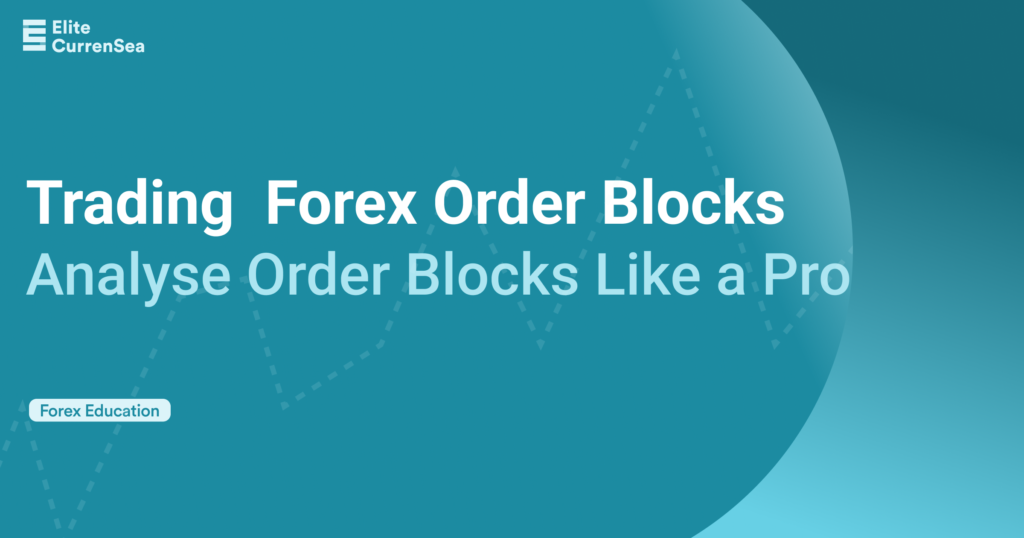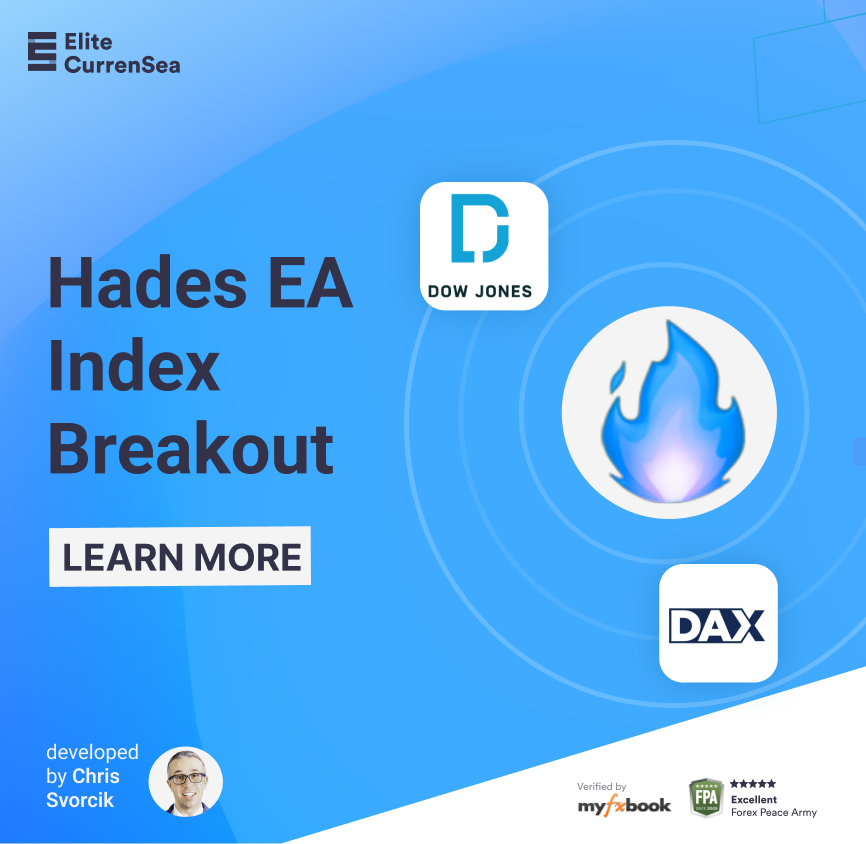Forex Order Blocks Explained

The foreign exchange markets bring together various market participants looking to profit from even the smallest price changes. In addition to retail traders with accounts of a few thousand dollars, there are banks and financial institutions with substantial influence in the market. While retail traders can easily open and close positions, it is always different for institutions and banks looking to take positions worth hundreds of millions of dollars.
Central banks and institutions cannot buy and sell currency pairs as they wish, as this could trigger significant volatility and unexpected price movements. Therefore, large players often have to split their orders and execute them in a specific order to avoid disturbing the market and causing wild price swings. Order blocks in forex are one tactic used by large players.
How to Trade with Order Blocks
Order blocks occur when central banks or other major financial institutions accumulate large amounts of the currency pair they want to buy or sell in a single large order. Although such institutions cannot complete a buy or sell in a single large order, they must create unique “blocks.”
The “blocks” allow institutions to split their orders into smaller blocks or orders. The orders are then executed at different price levels to avoid disturbing the market or causing extreme volatility. Institutions will continue to trigger small orders and blocks repeatedly until they reach their target. The result is the price breaking out in a given direction with high volume after a long period of consolidation.
For example, if a bank wants to open a buy position worth $200 million, it will split the order into four parts, each worth $50 million. The orders will then execute automatically at different levels.
Institutions typically use sophisticated orders to conceal their market involvement. For example, they can place an order showing 4 on the bid or sell side even though they have a block of 1,000.
There are two types of order blocks in forex:
- Bullish order block;
- Bearish order block.
Bullish Order Block
A bullish order block occurs when a large financial institution accumulates or buys large amounts of a currency pair in the forex market.
Such orders occur whenever central banks want to weaken the strength of their currency. For example, when the Bank of Japan wants to weaken the yen to boost the country’s export business, it accumulates a significant position in US dollars.
The Bank of Japan buying large amounts of US dollars only weakens the yen, making the country’s exports more affordable.

The chart above shows a period when USDJPY was trading in a range, with the pair struggling to make new highs or lows. During this period, some candlesticks came into play, supported by high trading volumes.
The high trading volumes confirm the accumulation as institutions placed blocks in the market. Later, the pair broke out to the upside as the accumulation triggered increased upward momentum.
If momentum shifts from bearish to bullish, the focus should be on bullish order blocks. It would therefore be a safe strategy to open long or buy positions to benefit from the large financial institution’s intention to instigate higher prices in the market.
Bearish Order Blocks
It mainly occurs when a central bank wants to strengthen its own currency. In this case, the central bank will sell the counter currency, weakening it at the expense of its own currency. For example, the Swiss central bank could sell large amounts of US dollars and buy large amounts of Swiss francs.

Such action weakens the dollar and strengthens the franc. The net effect would be a fall in the USDCHF pair, as shown above. The distribution phase shows a period where the central bank placed order blocks to weaken the US dollar in favor of the Swiss franc.
Whenever a market shifts from bullish to bearish, the focus should shift from bullish order blocks to bearish order blocks. It would therefore be best to open a short trade to align with the large financial institutions fueling bearish momentum.
Forex Order Block Strategy
Looking to benefit from order blocks and trade in the direction of large financial institutions? It is essential to note that forex order blocks do not occur daily. No one knows when central banks will enter a market through order blocks. They are a rare phenomenon, making them difficult to add to a trading plan.

Although order blocks in forex can take time to occur, they present some of the best trading opportunities. The best way to identify them is when markets are trading in a range. It is usually an early sign of accumulation and distribution whenever currency pairs struggle to make new highs or lows.
The longer the distribution range, the bigger the move presenting an ideal opportunity to profit from a significant price movement. It is therefore crucial to plot support and resistance levels.
Whenever the price breaks the support or resistance level on high volume, it confirms a buildup in momentum. For example, if the price breaks the resistance on high volume, it shows a buildup in upward momentum after significant accumulation. It would therefore be best to open a buy position to align with financial institutions placing long positions.
Likewise, whenever the price breaks below the support level after a long period of consolidation, it confirms a bearish block breakout. It would therefore be best to enter a short position to align with the central banks and other financial institutions.
While trading order blocks, the best forex order block indicator is one that can track underlying volume. A volume indicator makes it easy to know if the accumulation or distribution is happening on high volume. High volume means a large player is accumulating a large position pending a price breakout in a given direction.
How to Identify Order Blocks in Forex
Understanding what institutional traders do in the market is crucial to gaining an edge in trading currency pairs. To understand their actions, identifying high-probability order blocks is vital.
Identifying order blocks in smaller timeframes can be challenging given the volatility of such chart patterns. Order blocks are best found on higher timeframes, making it easy to identify areas of price consolidation. Periods of consolidation where price moves up and down without making new highs or lows often signal accumulation and distribution.
In a bullish market, periods of exhaustion often occur, resulting in prices moving in a range at the top of the chart. The weakness presents an opportunity for large institutions to accumulate positions while planning to drive prices higher. Whenever the price breaks above the resistance level, it confirms a bullish order block indicating the likelihood of the price breaking out to the upside and creating new higher highs.
In a bearish market, a period of consolidation may occur where price struggles to fall further or move up and create new higher highs. The rotation that occurs in a range resulting in range-bound price action often signals periods of distribution if it happens on high volume.
Price breaking out to the downside on huge volume confirms the bearish order block breakout paving the way for the price to fall and create new lower lows.
Bottom Line
Forex order blocks are essential aspects that provide valuable insights into what institutions are doing. They eliminate the need to guess the direction in which price is likely to move. One of the best ways to stay aligned with the market is to trade in the direction of financial institutions as they have substantial influence, steering the market in a given direction.
Higher timeframes provide a deeper insight into the quality of order blocks. Higher timeframe charts also show a bigger picture of price action, making it easy to identify areas of accumulation and distribution before a bearish order block or bullish order block breakout occurs. Once the price leaves the order block area with high momentum, it presents an ideal trading signal.
Safe Trading
Team of Elite CurrenSea 🇺🇦❤️











Leave a Reply